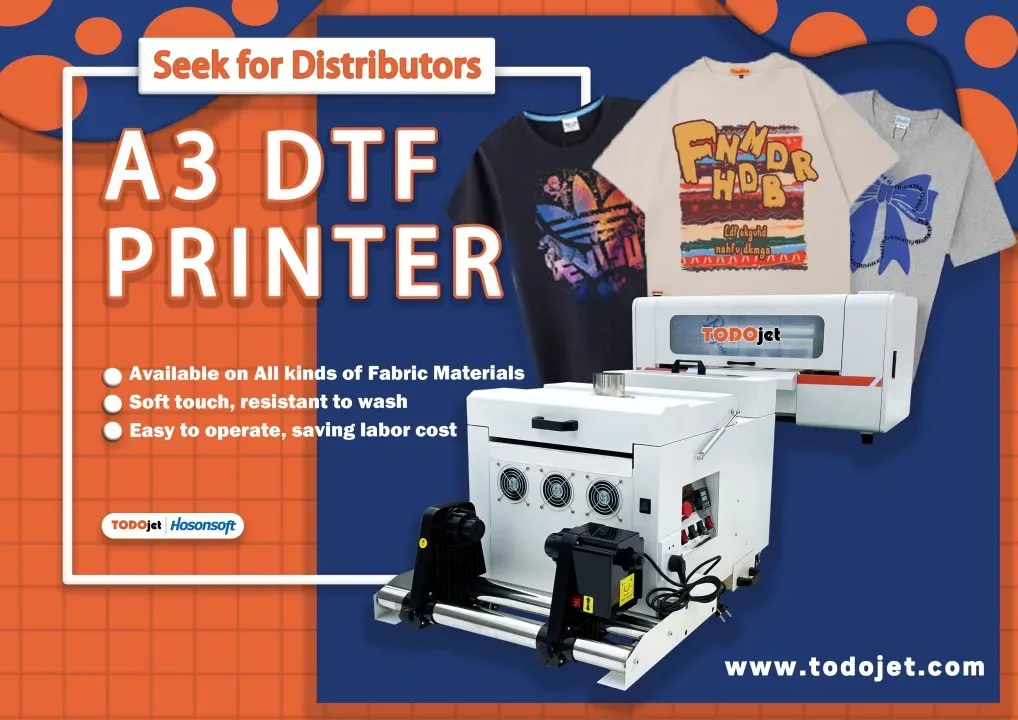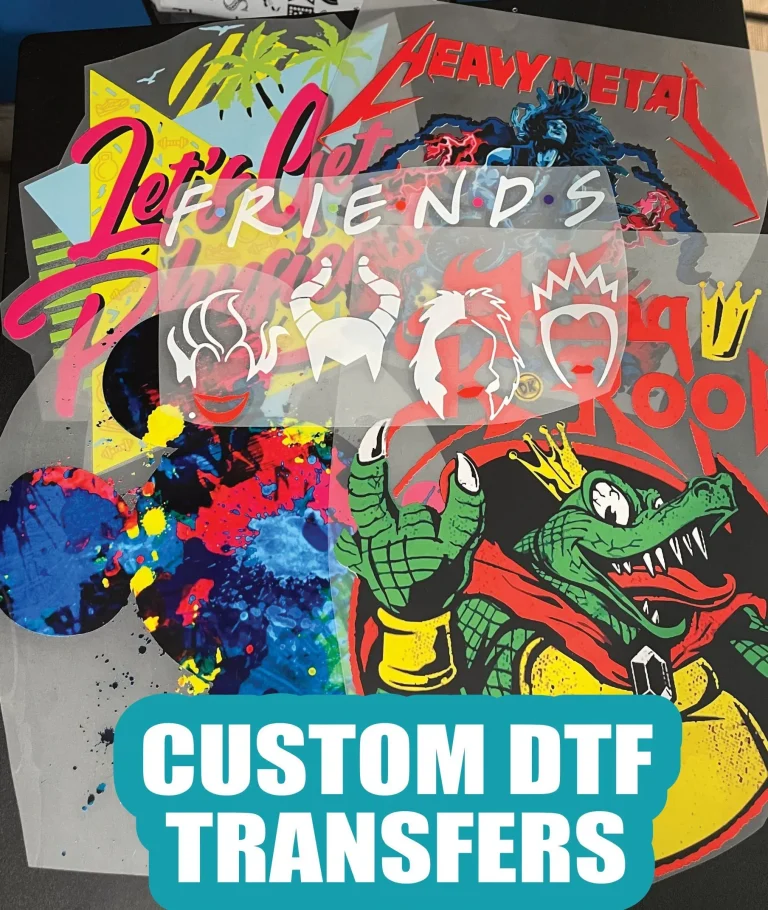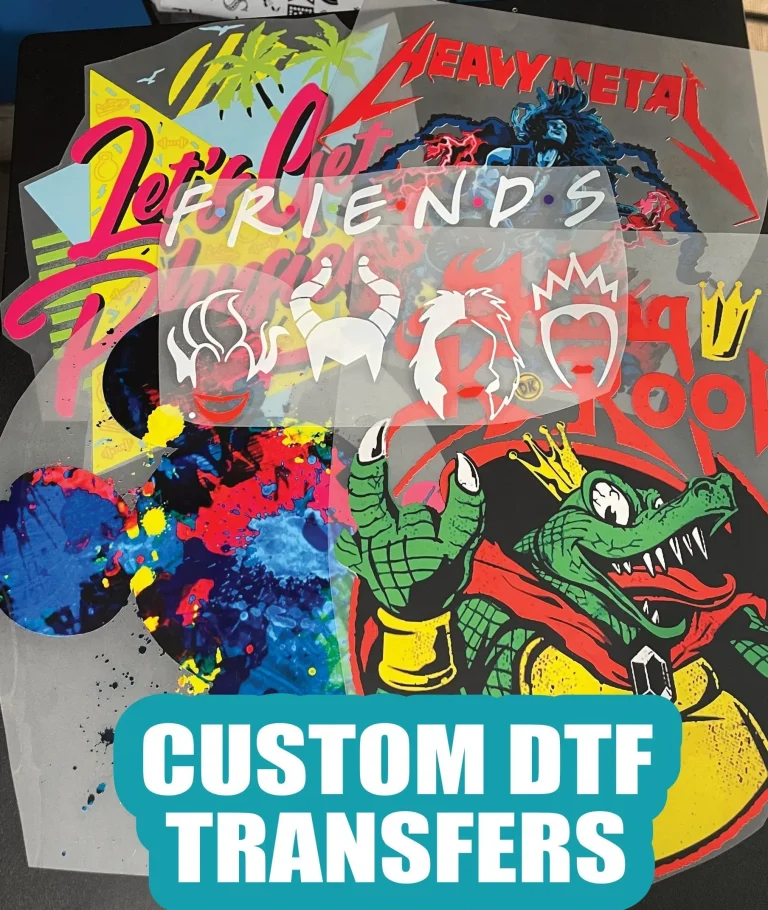In the dynamic landscape of the fashion industry, DTF technology, or Direct-to-Film printing, has quickly risen to prominence as a revolutionary method for producing stylish apparel. This cutting-edge technique allows designers to transfer vibrant and intricate designs onto fabric with unparalleled efficiency and minimal waste, paving the way for sustainable fashion like never before. By utilizing advanced DTF printing equipment, brands are not only enhancing their production capabilities but are also promoting accessibility in fashion, making high-quality printing solutions available to smaller enterprises. As sustainability becomes a central tenet of the industry, DTF technology provides a viable solution that appeals to eco-conscious consumers seeking environmentally-friendly fashion options. In this blog post, we will explore the latest developments in DTF technology and its transformative potential in shaping the future of fashion.
Direct-to-Film printing, often abbreviated as DTF printing, represents a significant innovation within the realm of textile printing, providing a more efficient and environmentally sustainable alternative to traditional methods. This technology has effectively bridged the gap for smaller businesses aiming to compete in the competitive fashion market, offering them access to high-quality fashion printing solutions without excessive costs. Furthermore, as the demand for sustainable fashion increases, DTF printing emerges as a frontrunner in reducing waste and promoting responsible production methods. By focusing on innovative printing techniques and accessibility, this revolution in fabric decoration holds great promise for a more inclusive and environmentally-conscious future in the fashion industry. Join us as we uncover how DTF technology is reshaping the artistic landscape of apparel design.
Innovative Equipment Transforming DTF Printing
The rise of Direct-to-Film (DTF) technology is largely attributed to groundbreaking equipment that caters specifically to the needs of the fashion industry. High-quality models like the XTool Apparel Printer and LOKLiK iPrinter have transformed production landscapes, simply by enhancing efficiency and enabling designers to explore their creativity without constraints. These printers combine remarkable features, such as swift printing speeds and superior image resolution, allowing for a seamless integration of various printing applications. As a result, fashion brands can produce everything from vibrant t-shirts to intricate patterns on delicate fabrics, opening doors to new design possibilities.
Moreover, the advancements in DTF printing equipment have made it easier for users to master the technology. With user-friendly interfaces and comprehensive support resources, designers and business owners can quickly adapt to this innovative process. This level of accessibility has increased the attractiveness of DTF technology, allowing a broader range of practitioners— from seasoned professionals to ambitious beginners— to capitalize on its capabilities. As such, the relentless evolution of DTF printers signals a promising future where fashion producers can effortlessly marry creativity with technical skill.
Emphasizing Accessibility in DTF Technology
Accessibility is a cornerstone of the DTF revolution in fashion, empowering small businesses and individuals to flourish in a competitive environment. The LOKLiK iPrinter, specifically designed with this goal in mind, illustrates how affordability and advanced features can coalesce to democratize access to high-quality printing. By cutting down the cost barriers traditionally associated with professional printing, this technology enables budding designers and entrepreneurs to establish their brands without requiring substantial capital investment. This shift fosters diversity in the industry, allowing fresh voices and innovative ideas to surface.
Furthermore, the accessibility of DTF printing technologies supports the aspirations of emerging designers who can now experiment with sustainable practices without sacrificing quality. By leveraging eco-friendly materials, the DTF process empowers creators to develop unique products that resonate with the increasing demand for responsible fashion. The combination of affordability and sustainability in the DTF space creates an atmosphere where creativity thrives, paving the way for new trends, unique artistic expressions, and a vibrant fashion community.
Sustainability in Fashion Through DTF Printing
In today’s fashion landscape, sustainability is no longer just a trend—it’s an expectation. Direct-to-Film technology is at the forefront of this transition by reducing waste associated with traditional apparel production methods. Unlike conventional printing, which can generate extensive material offcuts and excessive ink waste, DTF printing maximizes resource efficiency. This eco-conscious approach aligns seamlessly with the ethos of sustainable fashion, making it a sought-after solution for brands that value ethical production.
Companies like DTF San Antonio exemplify the potential of aligning profitability with ethical practices. By adopting DTF technology, they not only minimize their ecological impact but also cater to an audience that is increasingly aware of the environmental costs of their purchases. Such organizations are leading by example, demonstrating that it is possible to create high-quality, beautiful products while keeping processes sustainable. This commitment to environmental responsibility not only enhances brand loyalty among consumers but also positions these companies as pioneers in the evolving landscape of fashion.
Future Innovations in DTF Technology
The future of DTF technology in fashion is rife with possibilities as manufacturers continue to innovate and improve equipment capabilities. As advancements in DTF printers, inks, and materials are made, the quality of prints will only enhance, allowing for intricate designs that may previously have been unattainable with older methods. This evolution means that designers will have greater freedoms to express their creativity, paving the way for unique trends and styles that will captivate consumers in an increasingly competitive market.
Moreover, collaborations between designers and DTF manufacturers may lead to exclusive fashion lines that capitalize on the speed and versatility of the technology. By creating limited-edition pieces that are quick to produce, brands can harness consumer desires for novelty and personalization. This innovative fusion of design and technology will not only reshape consumer experiences but also carve out a significant niche within the fashion landscape moving forward. A commitment to leveraging DTF’s potential will help brands not just to survive but thrive amid the industry’s continuous evolution.
Consumer Behavior Shifts Towards DTF Solutions
As awareness of sustainability grows, consumer behaviors are increasingly shifting towards brands that prioritize eco-friendly practices, such as those utilizing DTF technology. Today’s buyers value transparency and alignment with personal ethics, leading to a rise in demand for brands that leverage sustainable methods to produce high-quality fashion items. This notable preference creates a burden and opportunity for manufacturers and designers to embrace DTF technology as a means of appealing to an environmentally-conscious audience.
Moreover, the potential for customization within DTF printing addresses the modern consumer’s desire for unique, personalized products. With the ability to quickly produce bespoke designs that cater to specific niches, fashion brands utilizing DTF can strengthen customer relationships by offering individualized products. This can elevate customer loyalty, fostering a deeper connection between buyers and brands that prioritize sustainable and accessible fashion solutions.
The Role of DTF Technology in Redefining Fashion Trends
DTF technology is set to redefine fashion trends by forming a dynamic landscape where creativity and sustainability go hand in hand. As brands adopt DTF printing, they’re not just focusing on creating visually appealing clothing; they’re committing to sustainable practices that resonate with today’s ethically-minded consumers. This cultural shift means that trends are emerging not solely on aesthetic appeal, but also on the principles of production and responsible sourcing.
The integration of sustainability-focused practices into mainstream fashion not only elevates the importance of DTF technology but also challenges brands to innovate continuously. As designers experiment with various DTF techniques, new trends are expected to surface that highlight not only catchy designs but also the stories behind those productions. This emphasis on craftsmanship, sustainability, and direct consumer engagement will shape the future of fashion, positioning DTF technology as a pivotal tool in this evolving narrative.
Frequently Asked Questions
What is Direct-to-Film (DTF) technology and its significance in the fashion industry?
Direct-to-Film (DTF) technology is an innovative printing method that transfers designs onto fabrics via a special film. It is significant in the fashion industry due to its ability to produce high-quality prints quickly and with less waste compared to traditional methods, making fashion printing solutions more sustainable and efficient. DTF technology enables brands to create personalized items, enhancing overall appeal and competitiveness.
How does DTF printing equipment improve accessibility for small fashion businesses?
DTF printing equipment, such as the LOKLiK iPrinter DTF-A3-XP600, enhances accessibility by providing affordable, user-friendly options for small fashion businesses and individual designers. This equipment allows them to produce professional-grade prints without needing significant investment, thereby leveling the playing field in the competitive fashion market and promoting innovation.
What are the sustainability benefits of using DTF technology in fashion production?
DTF technology promotes sustainability in fashion by reducing waste and using minimal ink during the printing process. This results in a lower environmental impact compared to traditional garment printing methods. Brands adopting DTF printing are able to align profitability with ethical production practices, appealing to the growing number of eco-conscious consumers.
Can DTF technology help improve fashion’s impact on sustainable fashion initiatives?
Yes, DTF technology plays a crucial role in sustainable fashion initiatives by minimizing waste during production and offering efficient printing solutions. This technology allows brands to experiment with eco-friendly materials and processes, fostering a commitment to sustainability that can resonate with environmentally-aware customers.
What advancements in DTF technology should fashion brands be aware of?
Fashion brands should be aware of advancements such as the XTool Apparel Printer, which combines cutting-edge features for high-quality printing with exceptional efficiency. These advancements enhance the production process, allowing for quicker turnaround times and more intricate designs, thereby maximizing creativity in fashion printing solutions.
How does DTF printing contribute to accessibility in fashion?
DTF printing contributes to accessibility in fashion by enabling smaller brands and individual designers to create high-quality apparel without the high costs associated with traditional printing methods. By democratizing access to professional-grade printing technology, DTF solutions help support diversity and innovation within the fashion industry.
| Key Point | Description |
|---|---|
| Innovative Printing Equipment | Printers like the XTool Apparel Printer are setting new standards in print quality and efficiency, enabling streamlined production for fashion brands. |
| Accessibility of DTF Printing | The LOKLiK iPrinter DTF-A3-XP600 makes high-quality printing accessible for small businesses, allowing them to compete with larger enterprises. |
| Sustainability Improvements | DTF technology reduces waste significantly compared to traditional methods, aligning with the industry’s shift towards eco-friendly practices. |
| The Future of DTF in Fashion | As technology evolves, DTF printing will enable more intricate designs and sustainable practices, making it essential for the future of fashion. |
Summary
DTF technology is transforming the fashion industry by offering innovative printing solutions that enhance production efficiency and sustainability. With advanced printing equipment like the XTool and LOKLiK, small businesses can compete effectively in a market traditionally dominated by larger brands. Furthermore, the sustainability focus of DTF technology resonates with today’s eco-conscious consumers, showcasing the potential for reduced waste and ethical production practices. As this technology continues to evolve, it is clear that DTF will play a crucial role in shaping a more sustainable, creative, and competitive fashion landscape.






